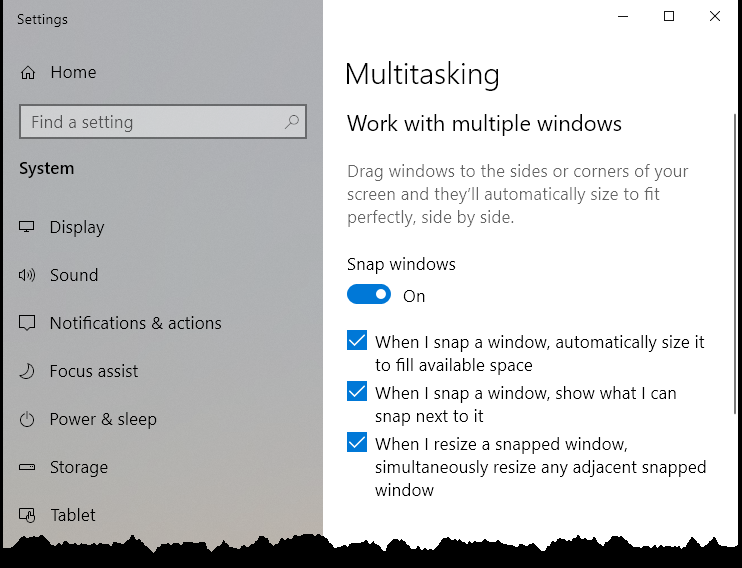Windows 8 introduced users to Snap, or Snap behavior. Snap allows for your windows to be organized on your screen, via either mouse, keyboard, or the Snap Assist feature, and have them "snap" to certain areas of your screen. This can be and was designed to be a help to users who want to display the content of their screen in a certain way.
While Snap can be helpful, at times it can be a bit annoying, such as when you specifically do not want the window to "snap" to a predefined size or position. This is the case with a Windows user who wrote that they were trying to position some windows and it would automatically snap to full screen because they had moved a window too close to the top edge. (This caused Windows, in an attempt to help, to assume that they wanted to snap the window to that size.) To turn Windows Snap behavior off, follow these steps:

Figure 1. The Multitasking section of system settings.
Those simple steps allow you to turn the Snap windows setting on or off. You may find times that you do prefer to have the Snap setting turned on. If you repeat the steps above, in step 2 simply turn the setting back on.
![]() This tip (13791) applies to Windows 10.
This tip (13791) applies to Windows 10.
It may not always be a good thing to have Windows automatically restart your computer after an update. This tip tells you ...
Discover MoreDo you work with a lot of open windows at the same time? If so, you'll love this way to easily focus on only one of those ...
Discover MoreYou can use Xbox Game Bar to record videos of applications running on your system. Let's see how to capture a video of ...
Discover MoreThere are currently no comments for this tip. (Be the first to leave your comment—just use the simple form above!)
Copyright © 2026 Sharon Parq Associates, Inc.
Comments